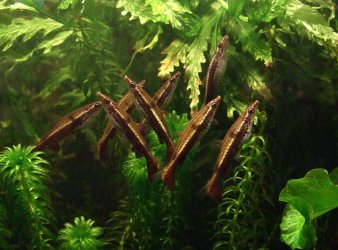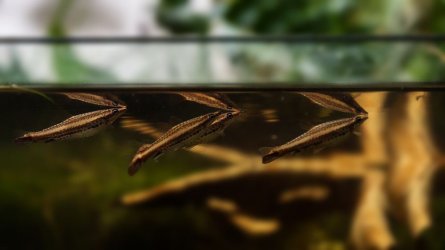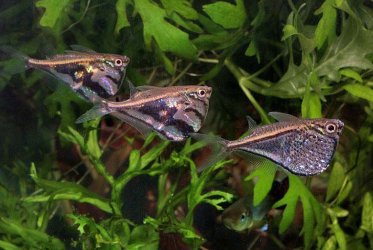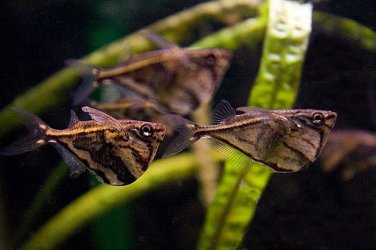That was me getting ahead of myself (or behind, however you look at it). These tiny "danio" species are more like "rasboras" in some ways, and it has to do with taxonomy (something I do like to bring into discussions

). The following from my profile of the species may explain it.
The genus Danio now (at the time of writing) holds nineteen valid described species (according to Fishbase) with ten of these reported from Myanmar.
Danio choprae was described by S.L. Hora in 1928. The species epithet honours Dr. B.N. Chopra, and Hora initially published the name with the feminine ending (choprae); the masculine form (choprai) is the correct gender in this case in accordance with the ICZN [International Commission on Zoological Nomenclature]. D. choprai is commonly seen, but the ICZN rules also do not allow for such corrections and the first published name must prevail. Dr. Sven Kullander (2012) redescribed D. choprae in his description of Danio flagrans as a distinct species.
This species was also considered in the genus Brachydanio for a time. This genus was erected by Dr. George S. Meyers (in the early 20th century) when he divided the "Danio" into three genera, Danio, Brachydanio and Daniops. During the latter two decades of the twentieth century, many ichthyologists had doubts about the validity of Brachydanio, and in 2003 Dr. Fang Fang determined that the genus Danio was paraphyletic [Greek para = near and phyle = race], which means the genus contains its most recent common ancestor but does not contain all the descendants of that ancestor. Danio was restricted to the nine species of the Danio dangila group comprised of the smaller-sized species, and the genus name Devario was suggested for the remaining larger-sized species. The former genus Brachydanio was disbanded.
In Joseph S. Nelson's Fishes of the World (2006), Danioninae was listed as a synonym of Rasborinae. It was generally held (though some disagreed) that there are three clades within the genus Danio, and the danionin genera are within the subfamily Rasborinae [having priority over Danioninae] along with several genera of rasborin. The danionins can be classed as a subfamily Danioninae, and this placement increasingly gained credibility and is now accepted as a distinct subfamily from Rasborinae within the Cyprinidae family.
You have
D. choprae, and another six would be highly advisable.


 ). The following from my profile of the species may explain it.
). The following from my profile of the species may explain it.



